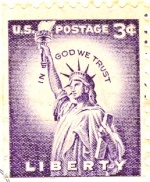Chapter 6
- Please keep these annotations SPOILER-FREE by not revealing information from later pages in the novel.
| If your edition has 183 pages, follow the pages marked a: | If your edition has 152 pages, follow b: |
a: ???, b: 120 - Humbert Humbert
Humbert Humbert is the narrator and main character in Vladimir Nabokov's "Lolita" (1955)[1]
b: 121 - eight-year-old
Why does Serge choose eight? Anything below 13 would probably be equally shocking. Numerology might give clues. For instance there are 8 Jungian cognitive functions; Timothy Leary identified 8 levels of consciousness; a byte is 8 bits; V8 is an automobile engine with 8 cilanders and also a vegetable juice drink.[2]
b: 122 - Emory Bortz
The most obvious allusion would be to Emory University in Atlanta, GA,[3] but there are also several individuals of interest named Emory.[4] The last name Bortz might allude to an Hungarian chieftain.[5] It is also
a diamond of inferior quality, commonly used for drill tips; abrasive diamond powder; bort.[6]
b: 122 - Grace
The wife's name may or may not live up to her name. Free and undeserved favour, especially of God; unmerited divine assistance given to humans for their regeneration or sanctification, or for resisting sin.[7]
b: 123 - Winthrop Tremaine
Winthrop is a colonial era surname, colonial governors of Massachusetts and Connecticut.[8] Tremaine is a Cornish language name, though most often a surname.[9] Johnny Tremain, minus the e at the end was a character and title of a children's book written in 1943. The main character lives through the American Revolution.[10]
b: 123 - girlie magazines
1950's (etc) "porn" magazine featuring scantily-clad females (about like modern underwear ads!!)[11]
b: 123 - riparian
Relating to or living or located on the bank of a natural watercourse.[12]
b: 124 - historical
Of, concerning, or in accordance with recorded history, (particularly) as opposed to legends, myths, and fictions.[13] Oedipa seeks to know the writer, not the myth or legend. The student mocks her by implying that Shakespeare, Marx, and Jesus are unknowable as "historical" figures.
b: 124 - Vatican Library
The Vatican Apostolic Library (Latin: Bibliotheca Apostolica Vaticana, Italian: Biblioteca Apostolica Vaticana), more commonly known as the Vatican Library or informally as the Vat, is the library of the Holy See, located in Vatican City, and is the city-state's national library. It was formally established in 1475, although it is much older—it is one of the oldest libraries in the world and contains one of the most significant collections of historical texts. It has 75,000 codices from throughout history, as well as 1.1 million printed books, which include some 8,500 incunabula.[14]
b: 124 - Bowdlerized
Thomas Bowdler published a version of Shakespeare that removed profanity and sexual references in an effort to be more appropriate for audiences of his time. Since then, the term 'bowdlerize' generally refers to censorship of offensive material from artistic works.[15]
a: 151, b: 124 - K. da chingado
Chingado is Spanish slang meaning "fucker."[16]
b: 126 - taken a Brody
Steve Brodie [sic] was a New York City bookie who claimed to have survived the 135 foot jump from the Brooklyn Bridge in 1886. The notoriety surrounding this story is the source of phrases such as "pull a Brodie" or "take a Brodie." As Driblette's walk into the Pacific was fatal and did not include a fall from a great height, Oedipa's appropriation of the expression is forced at best.[17]
b: 127 - woodcuts
Woodcut is a relief printing technique in printmaking. An artist carves an image into the surface of a block of wood—typically with gouges—leaving the printing parts level with the surface while removing the non-printing parts. Areas that the artist cuts away carry no ink, while characters or images at surface level carry the ink to produce the print. The block is cut along the wood grain (unlike wood engraving, where the block is cut in the end-grain). The surface is covered with ink by rolling over the surface with an ink-covered roller (brayer), leaving ink upon the flat surface but not in the non-printing areas.[18]
b: 127 - poetaster
An inferior poet; a writer of insignificant or shoddy poetry.[19]
b: 127 - figure of Death
Personifications of death are found in many religions and mythologies. In some mythologies, a character known as the Grim Reaper (usually depicted as a berobed skeleton wielding a scythe) causes the victim's death by coming to collect that person's soul. Other beliefs hold that the spectre of death is only a psychopomp, a benevolent figure who serves to gently sever the last ties between the soul and the body, and to guide the deceased to the afterlife, without having any control over when or how the victim dies. Death is most often personified in male form, although in certain cultures death is perceived as female (for instance, Marzanna in Slavic mythology, or Santa Muerte in Mexico). Death is also portrayed as one of the Four Horsemen of the Apocalypse. Most claims of its appearance occur in states of near-death.[20]
b: 127 - Protestant
Protestantism is a branch of Christianity[a] that emphasizes justification of sinners through faith alone, the teaching that salvation comes by unmerited divine grace, the priesthood of all believers, and the Bible as the sole infallible source of authority for Christian faith and practice.[1][2] The five solae summarize the basic theological beliefs of mainstream Protestantism.[21]
| Chapter 1 | Chapter 2 | Chapter 3 | Chapter 4 | Chapter 5 | Chapter 6 |
|---|




